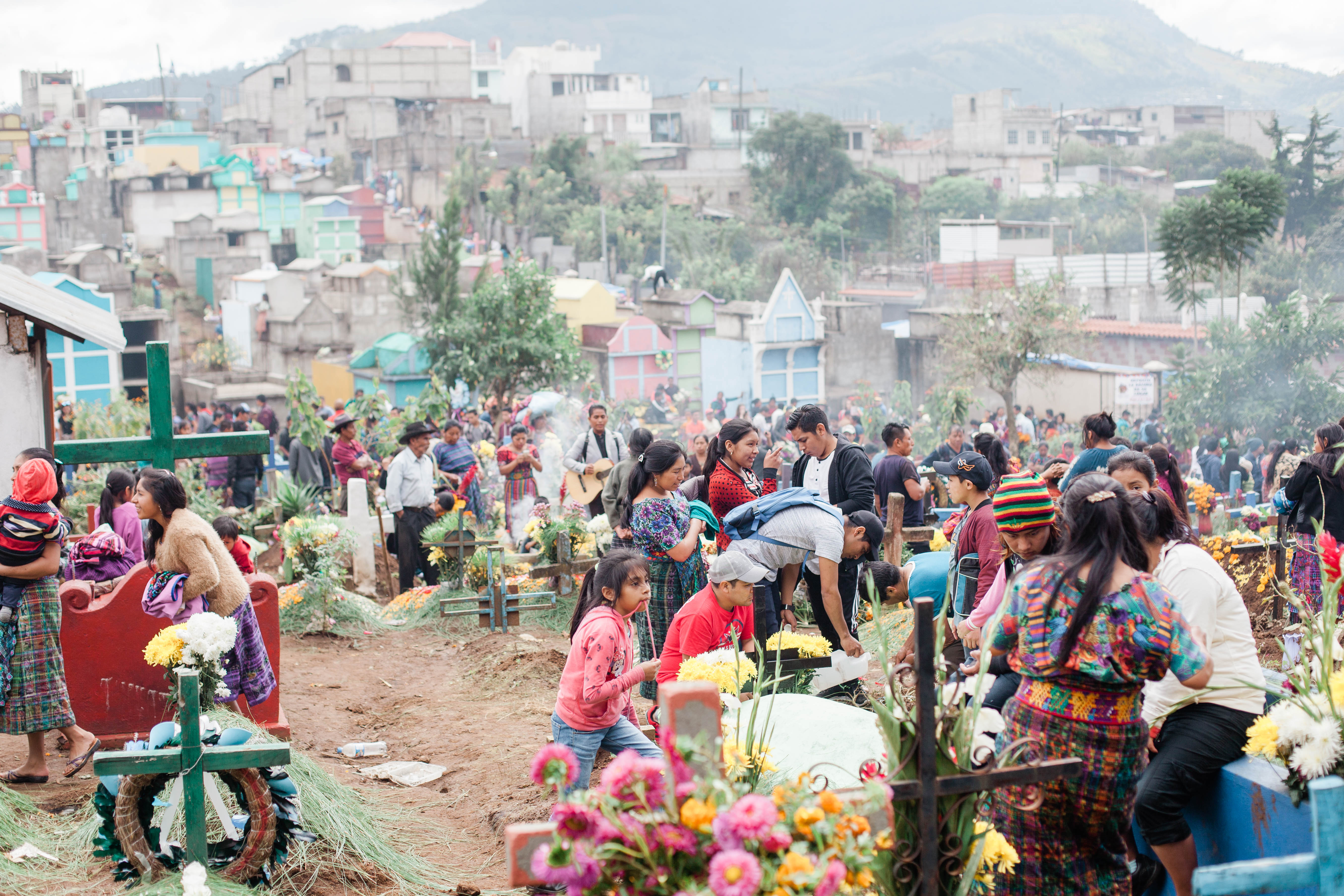

The Giant Kites of Sumpango and Santiago, Guatemala

There are two towns in particular in Guatemala that have elaborate celebrations each year to visit and honor the dead. The Giant Kites, known as "barriletes", are believed to serve as an element of communication between realms that allow people to connect and communicate with their lost loved ones on this day. These iconic kites are handmade by individuals, groups, and community organizations from throughout the country and are proudly displayed in Sumpango and Santiago on November 1st. These intricately designed kites can either stay stationary on the ground, animated by a gentle breeze, or be launched into the sky to fly depending on their size and design. Each one tells a unique story, weaving a vibrant tapestry of traditions and beliefs.

Families and communities come together to craft these masterpieces, adorning them with complex designs, vibrant colors, and heartfelt messages and they can take months to construct and a bit of a financial investment as well. Aside from their beauty and grandeur, the "barriletes" serve as a symbolic bridge between the living and the departed, a way to honor and remember loved ones who have passed away. In more modern times, the kites often display important messages for the community, including messages of love, unity, caring for the environment, women’s rights, and indigenous rights. The kites vary in size from 2 to over 20 meters in diameter and are made of tissue paper so that, even though they are large, they can be flown when the wind permits. It's hard to imagine the size of these kites until you're standing next to one, or watching one take flight above you.

The festival takes place just steps from the cemetery where you will still see family members going to visit their loved ones' graves - bringing offerings of food and flowers. Many will sit and eat a traditional dish called "fiambre" with their families at the grave of a deceased family member. And while there isn't nearly as much mezcal flowing through the cemetery as in Oaxaca, you will find folks sipping on rum or aguardiente and paying for mariachi or marimba music to be played at their grave as an offering. Witnessing this event is incredibly special and for those coming from the US, it's a unique opportunity to see how other cultures process and celebrate the circle of life. This is a great option for those who have already been to Día de Muertos in México and want to see how the neighboring country just south of Mexico celebrates this holiday.
Fiambre: A Feast for the Festivities
So What is Fiambre?

Ingredients
-
1/2 lb cooked turkey breast, shredded
-
1/2 lb cooked ham, diced
-
1/2 lb cooked chorizo sausage, sliced
-
1/2 cup cooked and diced bacon
-
1/2 cup cooked mixed vegetables (green beans, baby carrots, cauliflower, broccoli, peas, corn)
-
1/2 cup cooked beetroot, diced (for red Fiambre)
-
1/2 cup cooked garbanzo beans (chickpeas)
-
1/2 cup cooked black beans
-
1/2 cup cooked white beans
-
1/2 cup cooked rice
-
1/2 cup cooked pasta (small shells or macaroni)
For the Dressing
-
1 cup white vinegar
-
1/2 cup water
-
1/4 cup olive oil
-
2 cloves garlic, minced
-
1/4 cup fresh mixed herbs (parsley, mint, cilantro, chives)
-
1/4 cup finely chopped white onion
-
1/2 tsp dried oregano
-
Salt and black pepper to taste
-
Pickled jalapeño peppers (to garnish)
Instructions
-
Prepare all cooked ingredients, ensuring they are cooled and ready to use.
-
Create a salad base on a large platter or in a bowl by arranging shredded turkey, diced ham, sliced chorizo, diced bacon, cooked mixed vegetables, beetroot, garbanzo beans, black beans, white beans, rice, and pasta.
-
In a mixing bowl, combine white vinegar, water, olive oil, minced garlic, chopped herbs, chopped onion, dried oregano, salt, and pepper to make the dressing.
-
Pour the dressing evenly over the salad base, coating all ingredients. Adjust the amount of dressing to your preference.
-
Garnish with pickled jalapeño peppers for a spicy kick.
-
Cover and refrigerate for several hours or overnight to allow flavors to meld.
-
Serve chilled as a colorful centerpiece during celebrations. Enjoy your Fiambre!
Here is a little video you won't want to miss from our Guatemalan friends talking about this festivity in their own words!
At Heart of Travel, we're all about creating meaningful and transformative travel experiences that prioritize sustainability and support local communities. With a strong focus on regenerative travel, we make sure every trip we offer helps leave a positive mark on both the environment and the people we meet. We’d love for you to explore our upcoming trips and see how you can be part of a movement that celebrates real cultural connections and responsible tourism.
Imagine experiencing Sumpango during Día de Todos los Santos and witness the awe-inspiring kite festival up close and personal. Engage with the skilled artisans behind these incredible creations and gain insights into the cultural significance of this age-old tradition. Take a peek at our upcoming itineraries here – we can’t wait to have you join us on a journey that makes a difference!



Veronica on May 06, 2025
I’m from Guatemala, from Jutiapa Department, we celebrate, November 2d as well, that is the date we go to cemetery and bring flowers, I believe is from November 1s to 2d
novopet on May 06, 2025
Bravo, this magnificent idea is necessary just by the way